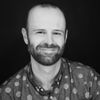It was in late August 2015 when I found out that Visualise had won the Doctors Without Borders (MSF) Forced From Home project. Our brief: condense a number of complex geopolitical issues into a series of emotive and empathetic VR films shot in some of the most remote and difficult places on Earth. I remember feeling a mixture of excitement and dread. We would be embarking on a globe spanning VR project about the refugee crisis, and it was my responsibility to direct it, but what excited me was the opportunity to prove that VR can connect people even in the most distant of places.
Even at the best of times, shooting VR films is challenging. VR really benefits from carefully planned shots and total control over the scene, and a refugee camp is essentially the furthest thing from this. People tend to walk up to the camera and inspect it, which is understandable because it looks strange, but this tends to ruin shots. In rural Tanzania, at the Nduta camp for Burundian refugees, a crowd of people 10 deep would circle the camera if we left it rolling for longer than about 2 minutes. To manage this, our audio engineer Henrik Oppermann would distract people by getting the crowd to follow him to his microphone to record some group singing, or to show them our VR headset.
Having a piece of equipment like a 360° camera in your luggage usually warrants extra scrutiny from security. In Iraq, we were at Erbil airport and security had me unpack every single piece of equipment for inspection. I think they were probably a bit bored and were interested in what we had with us. A particular moment which I’ll never forget was when one security guy picked up a compressed air canister, wondering if it was flammable. He took out his lighter and held it to the stream of air. Of course, nothing happened, but had it been something else he would have lit me on fire. Satisfied, he let me take it on the plane.
In Domiz Camp in northern Iraq we were filming a Syrian family from Damascus who had their house destroyed and fled. We spent a few days with the family in their makeshift concrete block home in the camp. What struck me most was how similar they seemed to my own family. After one day of shooting, I brought over my VR headset and showed it to one of their sons, a kid of about 10 years old. He very nervously put on the headset and spent about 20 minutes immersed in the experience. When he came out, he couldn’t stop smiling, and immediately began asking me questions about how the headset worked via our translator. It’s something I would have done as a 10 year old growing up in Canada.
Stepping into a refugee camp for the first time is a daunting experience because you’re confronted with poverty, helplessness, disease. Yet, what you soon realise about the people there is that they’re just like you. They want the same things you do. This was the idea that I tried to convey in Forced from Home. I think if VR can take someone to a place like this and allow them to meet the people affected by these situations, then it will make us more understanding of each other.
I was honoured to have been given the chance to take part in this project and for the chance to push the medium of VR forward.
